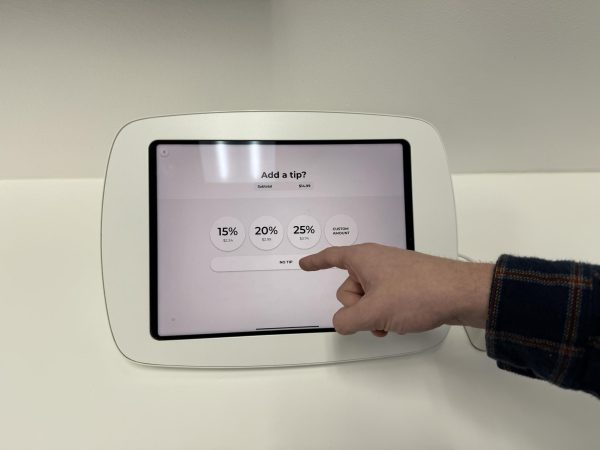Opinion: Impaired Driving Simulations
Media by Sam Hall
Jilian Bunderson, junior, attempts to walk in a straight line while wearing impairment goggles. She participated in the impaired driving simulations brought to MHS by US Army Staff Sergeants.
On November 2nd, I had the opportunity to go down to the MHS parking lot during fourth hour and participate in the impaired driving simulations that members of the US Army were running.
I first put on “very drunk” goggles and attempted to walk in a straight line (and I was almost completely falling over just with that), then I had to try and ride a small “car” around different cones in the area without hitting any of them, and lastly, I sat in a car simulation inside and had to pretend to drive it safely while a “friend” continued to talk to me, ask me to call their boss and had me type in the phone number for them.
All of these attempts went horribly on my part. While trying to drive around the cones “drunk”, I definitely hit a few of them, and I could never figure out which cones were real and which were just distortions from the goggles. Even though my mind was completely sober, through the simulated eyes of a drunk, I still couldn’t figure out my surroundings. Then at the inside simulation, I lasted about 10 seconds before I crashed the simulation after being distracted by my “friend”.
This whole experience taught me so much. I hope these Staff Sergeants return to MHS and do these simulations again for students. I also hope that more teachers will take the opportunity to bring their classes down during fourth hour to participate in these simulations and learn what I did.
I first learned that I am never going to drive drunk(and never drink period). I don’t like the feeling of not being fully aware of my surroundings, and I would never want to be in the position where I am a danger to myself and others on the road.
According to the Centers for Disease Control and Prevention, 29 people die daily in the United States because of an incident with an impaired driver. That is one person dying every 50 minutes.
Then, I learned that no text – absolutely none – is worth glancing away from the road to read. I’m going to be completely honest, a few times I have looked down at my phone after it lights up with a new text or have tried to respond to someone while on the road. But never again. It’s not worth the risk.
I am so grateful for this experience to truly understand the risks that we high schoolers face with driving. I learned so much and gained a greater appreciation for those trying to teach and convey these warnings.
Your donation will support the student journalists of Marquette High School. Your contribution will allow us to purchase equipment and cover our annual website hosting costs. You may become a PATRON by making a donation at one of these levels: White/$30, Green/$50, Blue/$100. Patron names will be published in the print newsmagazine, on the website and once per quarter on our social media accounts.

Jilian Bunderson, senior, is the Illustrator for the Messenger. She is also the co-president of Renaissance, a member of NHS, and has been involved in...

Sam Hall, sophomore, is a staff reporter for the Messenger. She is involved in Equity Club. She dances six times a week along with some conditioning and...







